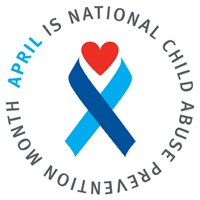Since 1983, we have officially been celebrating and publicizing National Child Abuse Prevention Month in the United States. Designed to bring together families and communities to work to prevent child abuse and neglect, the month of April challenges all of us to promote abuse prevention within our cities and towns and to help strengthen the families around us. This year’s theme is “Building Community, Building Hope.”
Raising public awareness for child abuse and neglect prevention is the duty of all of us, parents and singles alike. As we work to build a better future for ourselves and our children, we must also find ways to help other children and families in need. Child maltreatment often happens when families experience poverty, homelessness, substance abuse, domestic violence, food insecurity, unemployment, chronic physical health problems, and mental health issues. Sometimes families are just too physically depleted to meet the needs of their child, and neglect occurs. Sometimes the side effects of mental health problems or substance abuse cause a parent to react inappropriately with their child, or compromise the family’s lifestyle. Sometimes the effect of prolonged stress forces a parent to react uncontrollably and strike out at a child. Throughout all of these unfortunate situations, it is the children who suffer the most.
Here is the ugly truth about abuse and neglect: in 2015, statistics from the National Children’s Alliance showed that 1,670 children died from abuse and neglect in this country, and over 700,000 children are abused annually. The youngest children are sadly the most vulnerable; a child’s first year of life has the highest rate of victimization, at 24.2 children per 1000. Neglect is the most common form of maltreatment, as three fourths of all substantiated abuse cases are due to neglect. Physical abuse comprises 17.2% of the cases, and 8.4% are from sexual abuse. Many children are polyvictimized, meaning they have suffered more than one form of abuse. And, saddest of all, 4 out of 5 perpetrators are the victim’s parents.
Child abuse manifests itself in four forms: physical abuse, sexual abuse, neglect, and emotional maltreatment. Most children experience multiple types of abuse rather than just one. It can happen to a child at any age, and the perpetrator can be male or female. Recognize some of the potential signs of child abuse: sudden changes in behavior, untreated medical or physical problems, learning problems that cannot be explained, watchful or hypervigilant behavior as if the child expects something to happen, lack of adult supervision, overly compliant/overaching/excessively responsible behavior, not wanting to go home, marks/burns/bites/bruises/black eyes indicating physical harm, excessive school absences, reports of being injured by someone, stealing food or money, an unkempt appearance or lack of clean clothes, abusing drugs or alcohol, difficulty walking or sitting, an unusual knowledge of sexual information, running away, contracting a sexually transmitted disease or becoming pregnant at a young age, sexual promiscuity, isolation from others by the parent, acting infantile via head banging or rocking, attempting suicide, or appearing delayed in physical or emotional development. These may be signs that a child is being abused or neglected, but they may not be accurate predictors in and of themselves. It is something you should bring to the attention of the school, community center, child protective services, or law enforcement authorities, but you should never investigate a problem by yourself. Every community has a Child Abuse Hotline that you can call to report suspected abuse or neglect.
What else can we do to help make a difference in a child’s life? First, accept your role in this fight! Acknowledge the importance of families and communities working together to prevent child abuse and neglect, and commit to working hard to promote the social and emotional health of children and families. Troubled families cannot do this alone; they need your help and the help of those around you. Become an advocate, a helpmate, and a mentor.
Second, become aware of the activities and need in your community. Volunteer, build relationships with your neighbors, help out at community centers, offer to tutor young children, coach sports for children, become a Scout leader, teach parenting classes, attend parent meetings at your child’s school, or assist with food serving programs for the needy at your church. Participate in any task that helps children and families become stronger and feel better supported.
Third, break out the big guns! Run for office, speak at a community meeting, organize a community event for families, attend city council or school board meetings, raise money for local park improvements, help promote Scouting in a low income area, or partner with your local Prevent Child Abuse Council to host awareness events in your community. Encourage public policy makers to prioritize issues facing children and families. The more awareness you create for the plight of child abuse, the more support you will receive to eliminate it in your community.
Effectively preventing child abuse starts with just one open heart, only one caring person, one loving parent determined to help an innocent child. MLJ Adoptions’ families have brought needy orphans into their homes, or hope to do so in the near future; we know you have the capacity to care deeply and compassionately about others. Use this April to begin your fight to prevent child abuse in your own neighborhoods and communities. Reach out and show you care. Caring for even one abused child will dramatically change and may even save their life.
